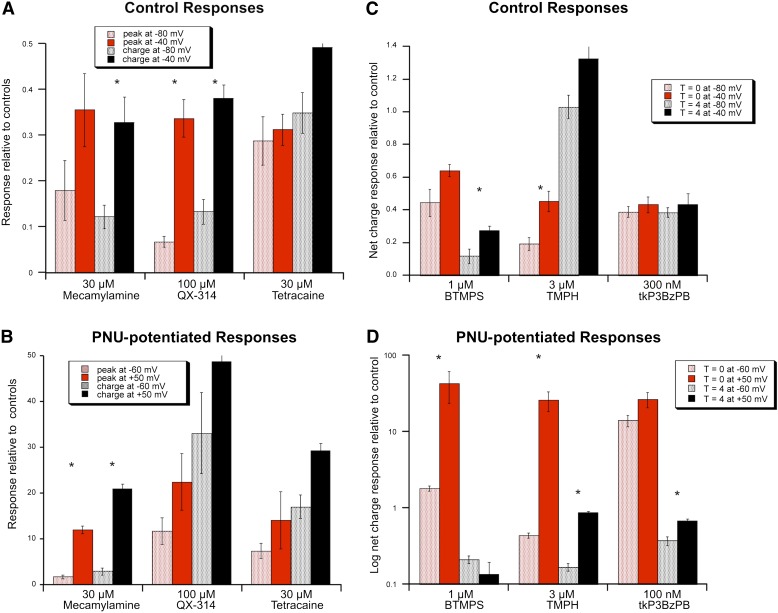Fig. 9.
The voltage dependence of antagonist activity. (A) The inhibition of 60 µM ACh-evoked α7-mediated absolute peak current and net charge responses in Xenopus oocytes recorded at either −80 or −40 mV by the small reversible antagonists. (B) Effects of the small reversible antagonists on α7-mediated responses evoked by the application of 60 µM ACh plus 10 µM PNU-120596 (PNU) recorded at either −60 or +50 mV. (C) The inhibition of 60 µM ACh-evoked α7-mediated net charge responses by large slowly reversible antagonists measured at either −80 or −40 mV. Effects were measured both on the responses evoked during the ACh-antagonist coapplication and on the responses to control applications of ACh 4 minutes after the coapplication responses. (D) Effects of the large slowly reversible antagonists on α7-mediated absolute net charge responses evoked by the application of 60 µM ACh plus 10 µM PNU-120596 recorded at either −60 or +50 mV. Effects were measured both on the responses evoked during the ACh/PNU-120596-antagonist coapplication and on the responses to control applications of ACh 4 minutes after the coapplication responses. Data on the inhibition of control ACh responses (A and C) were normalized to ACh-evoked responses recorded at the same holding potentials as the experimental responses. Data on the inhibition of responses to ACh plus PNU-120596 (B and D) were normalized to the average of two ACh-evoked control responses recorded at −60 mV prior to the coapplication of ACh, PNU-120596, and antagonist at the indicated voltage. Note that in D, due to the large magnitude of both the PNU-120596 and the antagonist effects, response data are displayed on a log scale. All bars represent the mean (± S.E.M.) of at least four oocytes. Asterisks indicate conditions in which there was significantly less (P < 0.05) inhibition of responses recorded at the more positive of the two potentials compared.

